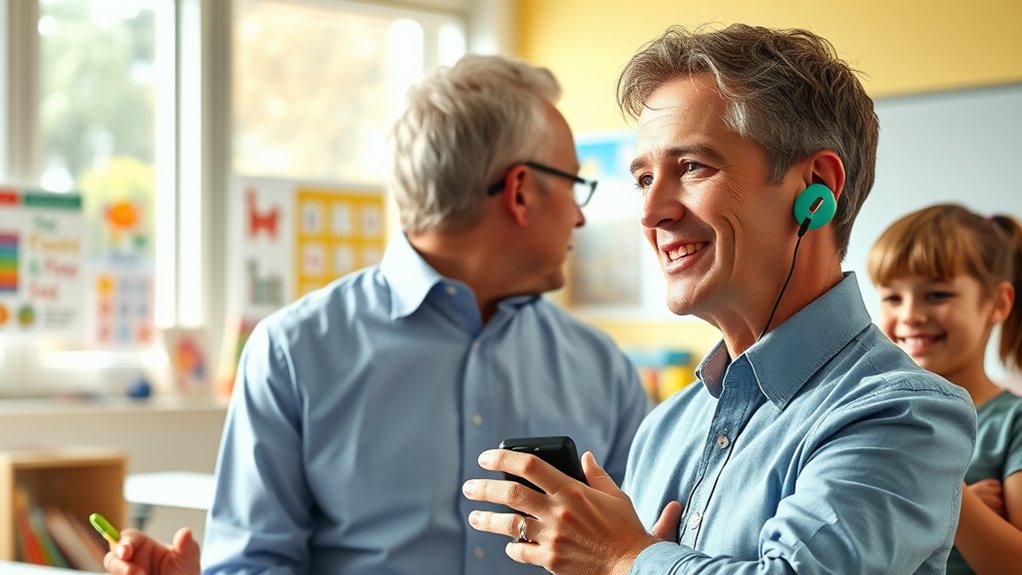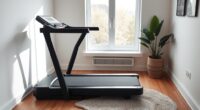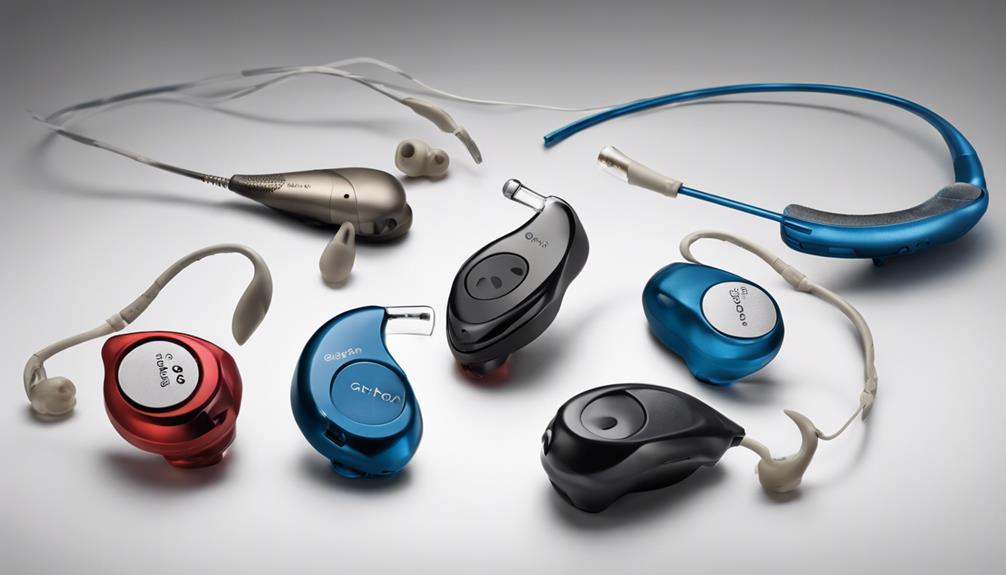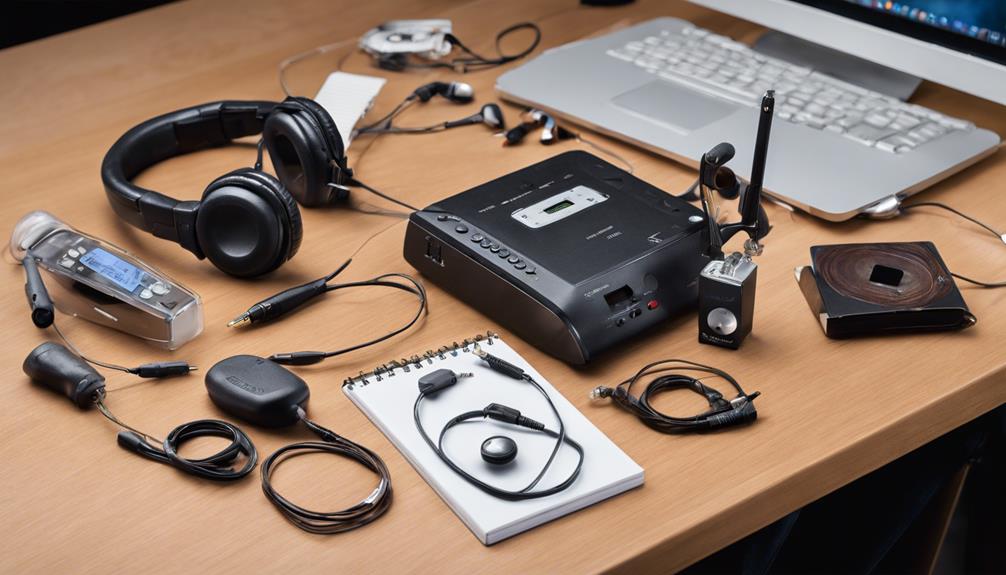Personal FM systems are a game changer in the classroom because they deliver clear sound directly to your hearing devices or headphones, making it easier for you to understand lessons without shouting or repeated questions. They cut down background noise and room acoustics, ensuring you stay engaged and confident. These systems also help you move freely and participate actively. Keep exploring to discover how they can transform your learning experience even further.
Key Takeaways
- Personal FM systems deliver clear audio directly to hearing devices, improving comprehension in noisy classrooms.
- They enhance student engagement by reducing the need for repetition and proximity to the teacher.
- Teachers can speak naturally without shouting, creating a comfortable and effective learning environment.
- Portable and adaptable, FM systems support various classroom sizes and movement, promoting inclusive participation.
- They reduce listening fatigue and strain, leading to better focus and learning outcomes for all students.

Have you ever struggled to hear clearly in noisy environments? Whether you’re trying to focus in a bustling classroom or a crowded cafeteria, background noise can make it difficult to catch every word. That’s where personal FM systems come into play, transforming the way students experience learning. These devices use wireless amplification to deliver sound directly to a student’s hearing device or headphones, ensuring clarity and minimizing distractions. With a personal FM system, you’re no longer dependent on the acoustics of the room or the speaker’s voice projection. Instead, you receive a clear, direct audio signal that cuts through ambient noise.
Using wireless amplification, personal FM systems considerably enhance student engagement. When students can hear their teachers or lecturers without straining, they’re more likely to participate actively. No longer do they need to ask for repeats or sit closer to the speaker out of necessity. Instead, they can focus on the lesson, follow instructions accurately, and feel more confident in their ability to understand. This increased engagement leads to better comprehension and academic performance, especially for students with hearing impairments or those sensitive to background noise. Teachers also benefit because they can speak naturally without raising their voice or shouting over the noise, creating a more comfortable and effective learning environment.
Wireless amplification boosts student engagement and confidence, improving understanding and creating a more comfortable, effective learning environment.
Moreover, personal FM systems are portable and easy to use, making them ideal for various classroom settings. Whether it’s a small group discussion or a large lecture hall, these systems adapt seamlessly. Students can move freely around the room without losing the audio signal, which encourages participation and collaboration. Teachers can walk around, engaging with students directly, knowing that each individual receives the sound clearly. This mobility fosters a more inclusive atmosphere where all students, regardless of their hearing ability, can access the same quality of instruction.
In addition, personal FM systems help reduce fatigue caused by straining to hear. Constantly asking for repeats or trying to focus on muffled speech can be exhausting and discouraging. When sound is amplified wirelessly and directly to the listener, students conserve energy and stay attentive longer. They’re not fighting to piece together words from a noisy background; instead, they experience a natural, clear sound that keeps them connected to the lesson. Furthermore, understanding the effectiveness of different technologies can help educators select the most suitable system for their classroom needs, ensuring optimal results. Overall, these systems are a game changer — enabling better communication, increasing engagement, and supporting diverse learning needs. They turn a challenging environment into a space where every student has equal access to instruction, making the classroom a more inclusive and effective place to learn.
Frequently Asked Questions
How Do Personal FM Systems Differ From Traditional Hearing Aids?
Personal FM systems differ from traditional hearing aids by offering wireless connectivity, allowing you to stream sound directly from a microphone to your device. They also provide device customization, so you can adjust settings for ideal hearing in various environments. Unlike traditional hearing aids, which amplify sound broadly, FM systems focus on clear, direct audio, making communication easier, especially in noisy settings like classrooms or crowded places.
What Is the Typical Battery Life for a Personal FM System?
Ever wonder how long your device stays powered? Typically, a personal FM system offers around 8 to 12 hours of battery longevity, depending on usage and model. Good power management plays a vital role in extending this time. You can easily swap or recharge batteries, ensuring uninterrupted performance throughout your day. Isn’t it great when technology keeps up with your busy schedule without constant charging?
Are Personal FM Systems Suitable for All Age Groups?
You might wonder if personal FM systems suit all age groups. They are designed with age appropriateness and user comfort in mind, making them versatile for children, teens, and adults. These systems can be adjusted to fit different sizes and needs, ensuring ease of use across ages. While some features may vary, overall, personal FM systems are suitable for a wide range of users, enhancing communication in various settings.
How Difficult Is It to Set up a Personal FM System?
Setting up a personal FM system isn’t too difficult, especially if you prioritize user friendliness. Most systems feature straightforward installation processes, often just involving attaching a microphone and syncing the receiver. While some models may have more complex installation steps, many are designed for quick setup, so you can get started without hassle. Overall, with clear instructions, the installation complexity remains manageable, making these systems accessible for most users.
What Maintenance Is Required to Keep a Personal FM System Functioning?
To keep your personal FM system functioning well, you’ll need to follow simple maintenance steps. Regular cleaning protocols help prevent dust and debris buildup, ensuring clear sound. Additionally, check for software updates from the manufacturer to keep the system running smoothly and securely. Keep the device and accessories in good condition, and replace batteries as needed. These routine practices help maintain peak performance and extend the system’s lifespan.
Conclusion
Don’t let background noise or hearing difficulties hold your students back. Personal FM systems are a game changer, giving each learner the clarity they need to succeed. Yes, it’s an investment, but imagine the confidence and engagement you’ll see when every child can hear and understand. You’re not just improving their education—you’re transforming their lives. Embrace this technology, and watch your classroom become a place where everyone truly has a voice.











